[Yamagata’s local cuisine] “Hippari udon” is recommended in the summer! “Chilled” recipe on hot days’ cooking
2025/09/17 This site contains advertisements. Category: Special-feature
![[Yamagata’s local cuisine] “Hippari udon” is recommended in the summer! “Chilled” recipe on hot days’ cooking アイキャッチ](https://bongheiberg.yamagata.jp/wp-content/uploads/2025/09/29523048_m.jpg)
Yamagata’s local dish, “Hippari Udon,” is a simple yet deeply flavorful dish where udon noodles are coated in a sauce made with natto and canned mackerel. It’s known as a warming winter dish, but it’s actually especially recommended in summer! By combining chilled udon noodles with a refreshing sauce, you can enjoy a smooth and delicious meal even in seasons when your appetite tends to be low.
This article, we’ll introduce the appeal and history of Hippari Udon, as well as some recommended chilled recipes.
What is Yamagata’s specialty, Hippari Udon?
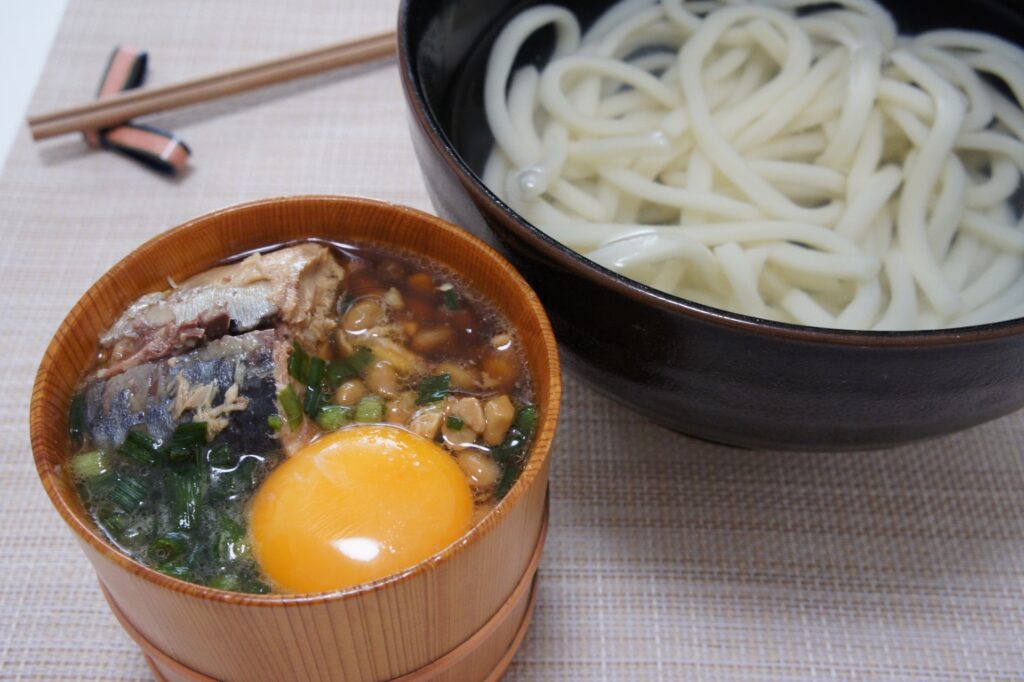
“Hippari Udon” is a local dish that has long been loved in the inland area of Yamagata Prefecture, particularly in the Murayama region. It is characterized by its simple style of eating, in which boiled, dried udon noodles are pulled directly from the pot and dipped in a sauce made with natto, canned mackerel, and green onions.
The name is said to come from the action of “pulling” the udon noodles from the pot, or the way the strings of natto are “pulled.”
History of Hippari Udon
“Hippari Udon” dates back to around 1945. It is said to have started when people who worked in charcoal grilling in the Tozawa area sprinkled salt on boiled udon noodles and ate them. Later, in the 1950s, canned mackerel became widely available with the opening of a canning factory in Murayama City, and the current style of “natto + canned mackerel” became established.
Nowadays, it is known not only as a home-cooked dish, but also as a popular Yamagata specialty among tourists.
Simple yet profound! The appeal of Hippie Udon
Hippie udon is a local dish that boasts a simple yet profound flavor.
Here, we’ll introduce the appeal of this long-loved dish by the people of Yamagata Prefecture.
Easy to Make
One of the great things about Hiyashi Udon is how hassle-free it is to prepare.
All you need to do is boil the udon noodles and prepare the dipping sauce by mixing natto, canned mackerel, green onions, and eggs; it’s ready in no time. It’s a convenient dish that can be made quickly, even on busy days or when you don’t have much time to cook.
Nutritionally balanced
Another great thing about this dish is that it’s packed with nutrients, including the protein and fiber from natto and the EPA and DHA from canned mackerel. Adding an egg further increases the nutritional value, making it a healthy and stamina-boosting dish.
It’s also the perfect dish for when you want to easily balance your nutrition.
Versatility
One of the joys of Hiyari Udon is how versatile it can be.
Of course, you can enjoy it simply with natto and canned mackerel, but we also recommend adding kimchi or shiso leaves to find your own favorite flavor.
Recipes vary from household to household, with some adding egg yolk or mountain yam to make it mellow, and others adding chili oil or garlic for a spicy kick. You can enjoy different flavors just by changing the ingredients and condiments.
Warming in the cold winter
Hiyari udon, eaten by scooping noodles directly from a boiling pot, is a dish that will warm you from the inside out, especially on cold winter days.
Eating it with family or friends is sure to warm you right down to the core. It continues to be loved by many people as a winter staple in Yamagata.
Hippari udon isn’t just for winter! It’s also a great summer dish
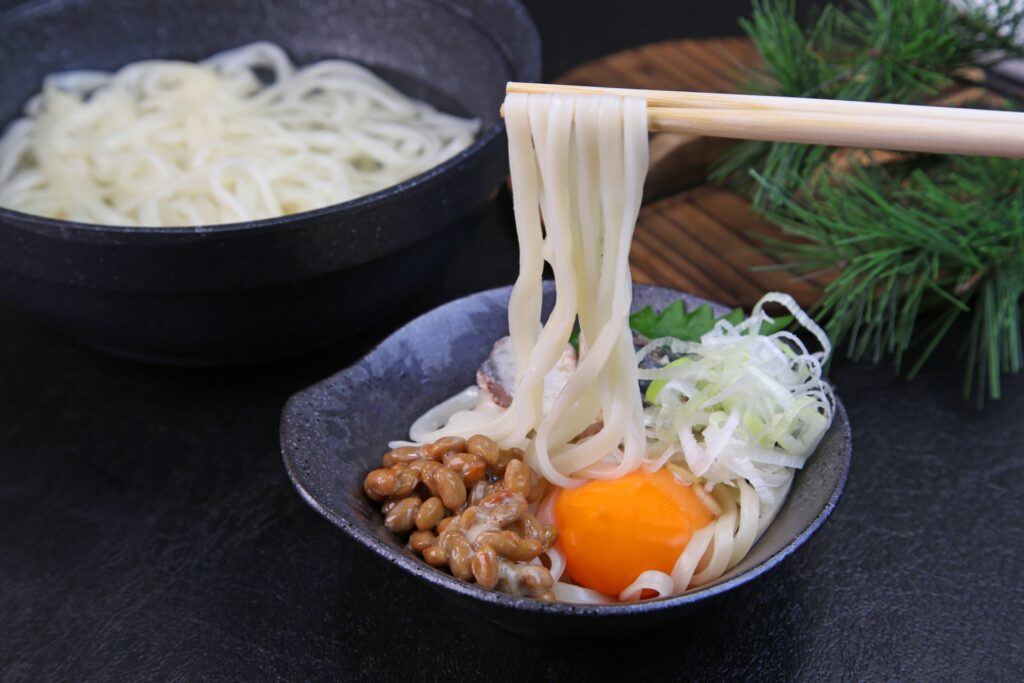
When you hear “hippari udon,” you might think of it as a dish to warm you up in the winter, but it’s actually a recommended dish for summer.
You might think, “It’s too hot to eat in the summer,” but that’s not true.
Just eat it chilled
In fact, in this scorching heat, summer fatigue can make it difficult to eat, and you’re likely to end up consuming too much water and becoming malnourished.
At times like these, we recommend Hiyari Udon, a convenient way to get your nutrition.
If you boil udon noodles cold and then rinse them in ice water, you can enjoy a smooth texture that will stimulate your appetite even on a hot day. What’s more, ingredients like natto and canned mackerel can be prepared without cooking, making it a convenient option even when you don’t want to spend long periods in the kitchen.
Adding condiments like shiso leaves and myoga ginger to the refreshing dipping sauce instantly transforms it into a bowl of cool, refreshing udon. It’s recommended for summer because it’s a refreshing dish that can be enjoyed while also building stamina.
Depending on how you arrange it, it can be made to have a refreshing flavor or a strong, stamina-boosting flavor, making it a versatile dish that’s easy to incorporate into your summer dinner table.
Three classic ingredients essential for Hippari udon!
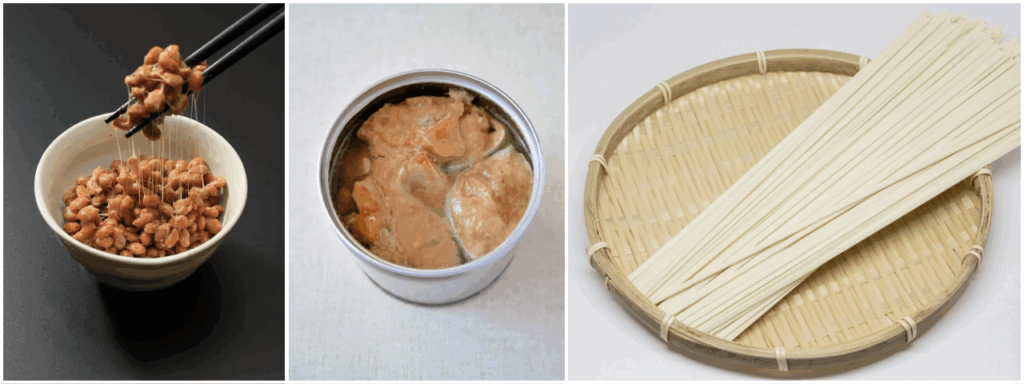
When talking about Hippari Udon, one thing that cannot be left out is its unique combination. Each of the classic ingredients that create its simple yet rich flavor plays an important role.
Here, we introduce the classic ingredients that are essential to Hippari Udon.
Natto
It’s no exaggeration to say that natto is the star ingredient of Hippari udon. Its stringy texture and aroma blend perfectly with the noodles, creating an addictive flavor.
Rich in protein and dietary fiber, it’s also a nutritious food. Each household has their own unique way of handling natto, from finely chopping it to using it whole.
Canned Mackerel
Alongside natto, canned mackerel is also essential. The flavorful mackerel meat, along with the oil and broth, adds richness to the dipping sauce, bringing the overall flavor together.
Another great thing about canned noodles is that they’re easy to use. Because they’re soft enough to eat, even the bones, they’re also perfect for replenishment of nutrients like calcium.
Dried Noodles
Dried noodles, which have a long shelf life, are often used for pull-and-pull udon. Their smooth texture and firm texture go perfectly with the rich dipping sauce. Because they’re eaten by “pulling” them directly from the pot, dried noodles’ ease of eating and long shelf life have made them a popular choice.
Though simple, it’s an important part of the overall dish.
How to Make Chilled Hiyashi Udon

Hippari udon is easy to make at home.
This time, we’ll show you how to make chilled udon noodles, perfect for summer!
Use the recipe below as a reference and enjoy customizing your own ingredients and sauces.
Recommended Recipe (Serves 2)
- Dried noodles: 2 servings
- White dashi: appropriate amount (or your favorite sauce)
- 1 can of canned mackerel
- 2 packs of natto
- Yamaimo yam: as needed
- Leek onion: as needed
- 2 raw eggs
- Tempura scraps: as needed
- Garlic paste: as needed (recommended!)
- Chili oil: as needed
Instructions
- Boil the udon noodles in a pot, then rinse with cold water and drain.
- Mix the natto (with sauce) in a bowl, add the canned mackerel, and loosen it.
- Add chopped green onions, yam, raw egg, tempura scraps, garlic, and chili oil, and season with white dashi.
- Fill a bowl with cold water and place the udon noodles on top.
- Divide the sauce into small bowls and serve tsukemen-style.
Summary
Yamagata’s local dish, “Hippari Udon,” is a versatile dish that can be enjoyed year-round—hot in winter and chilled in summer.
While carrying on a time-honored tradition, it can also be adapted to fit modern dining tables.
Be sure to try chilled Hippari Udon this summer!


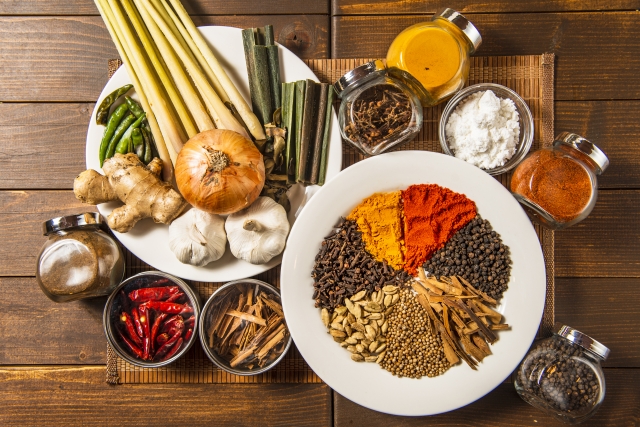

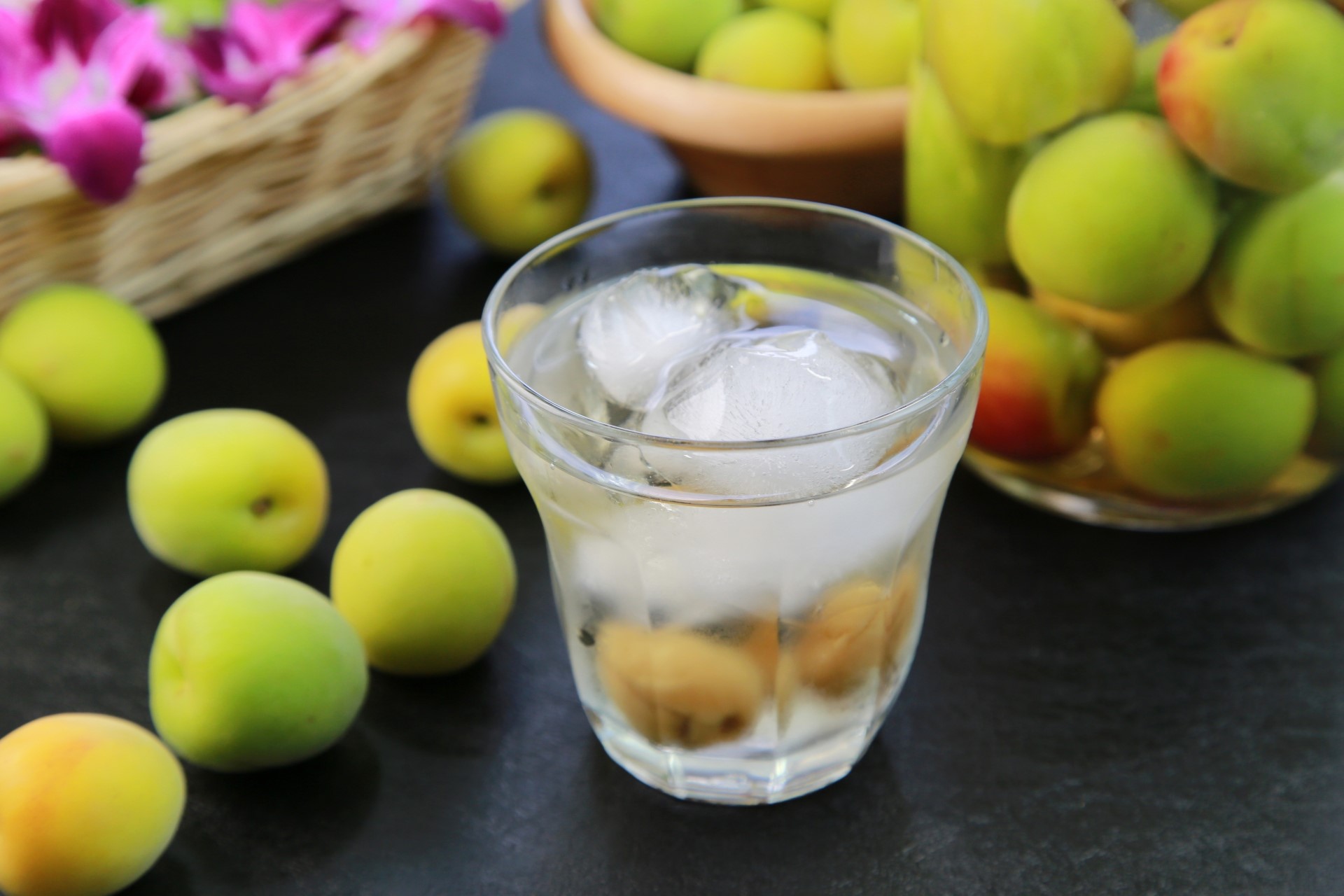
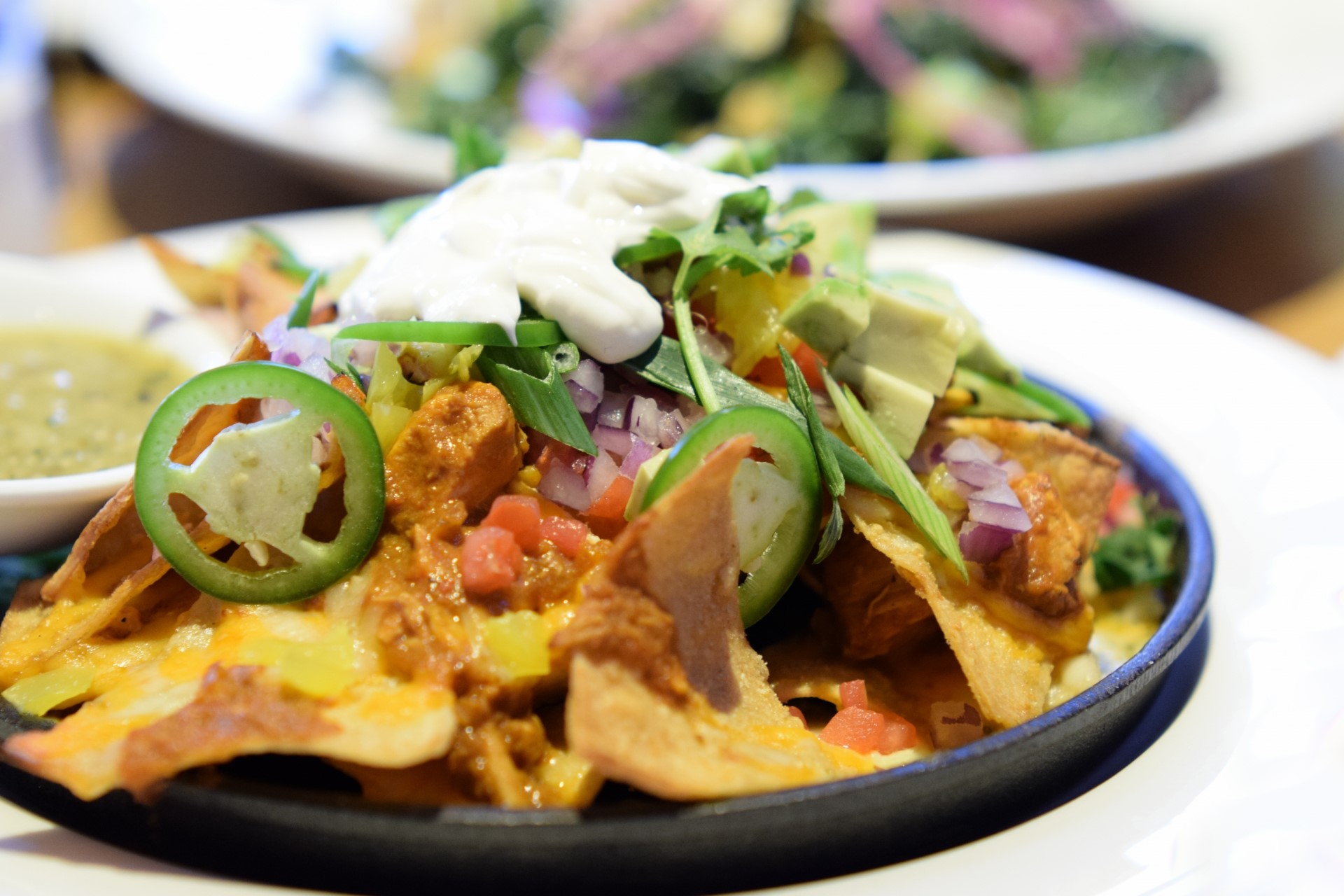
![[Reviews] Adding vinegar to ramen makes it refreshing and increases its health benefits! アイキャッチ](https://bongheiberg.yamagata.jp/wp-content/uploads/2025/09/ramen_to_su.png)
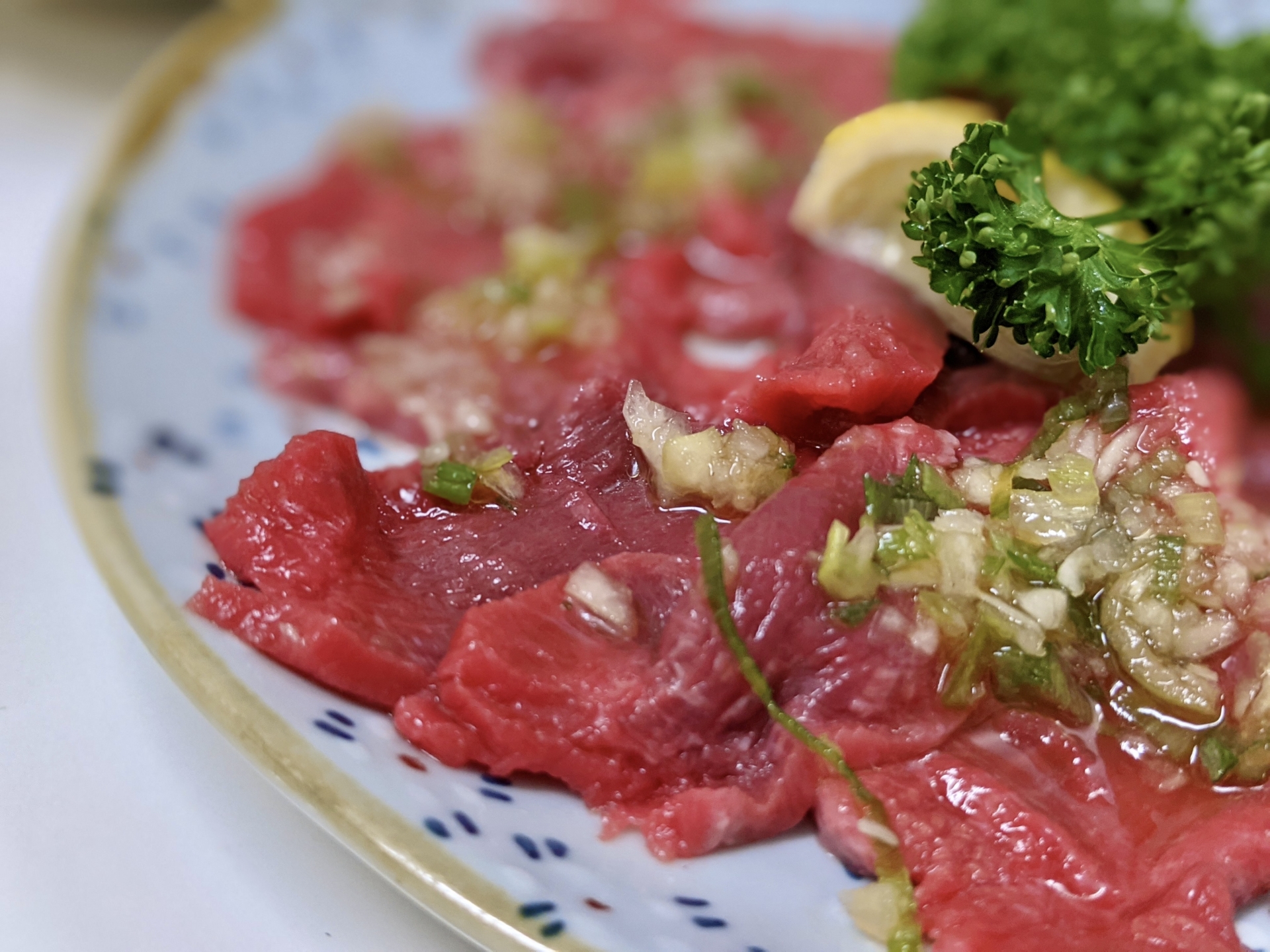

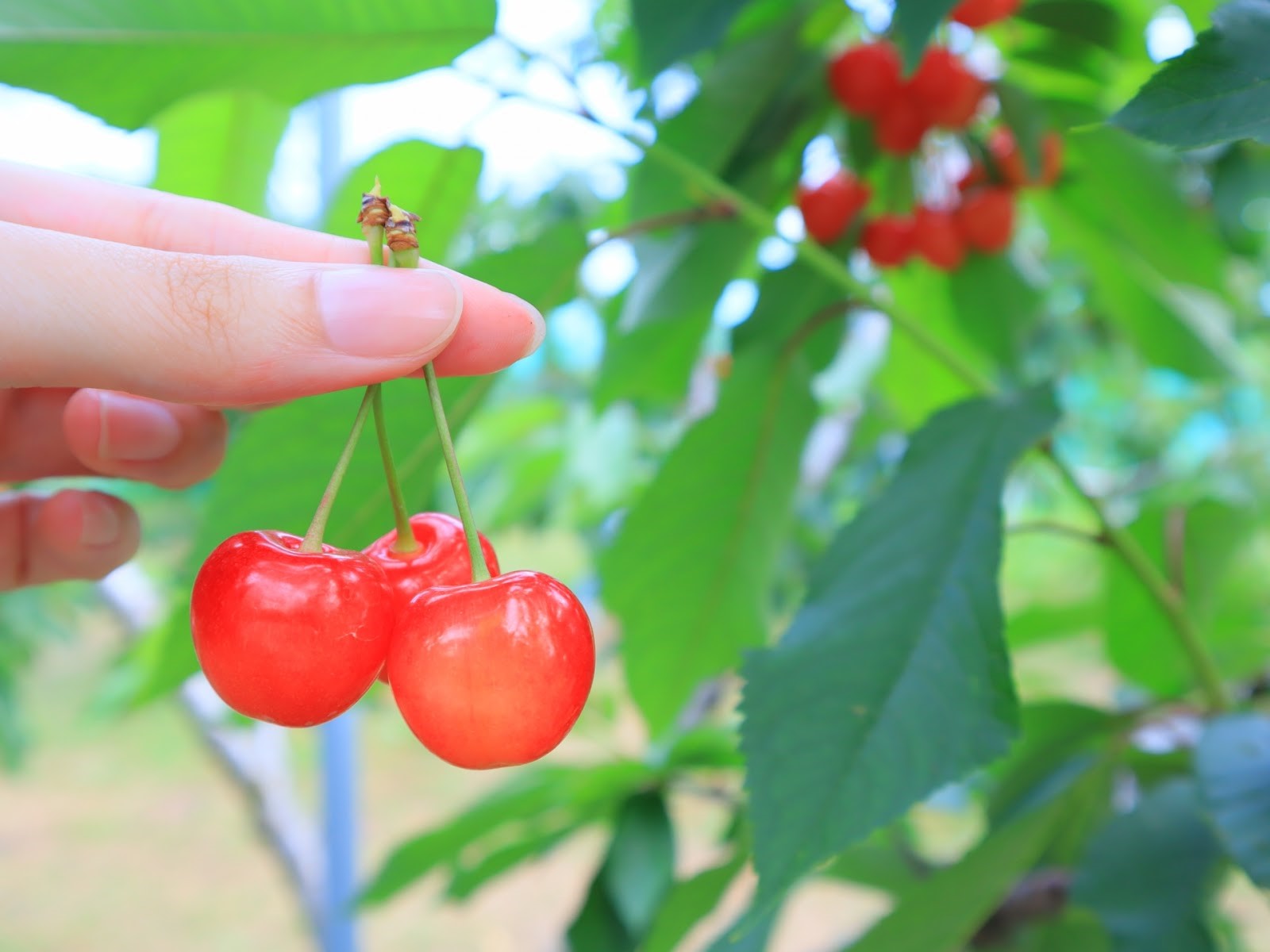

![[Yamagata, Tendo] Enjoy authentic gelato at the sports park! Made by Italian-trained artisans at “COZAB GELATO” アイキャッチ](https://bongheiberg.yamagata.jp/wp-content/uploads/2025/09/top-scaled.jpg)
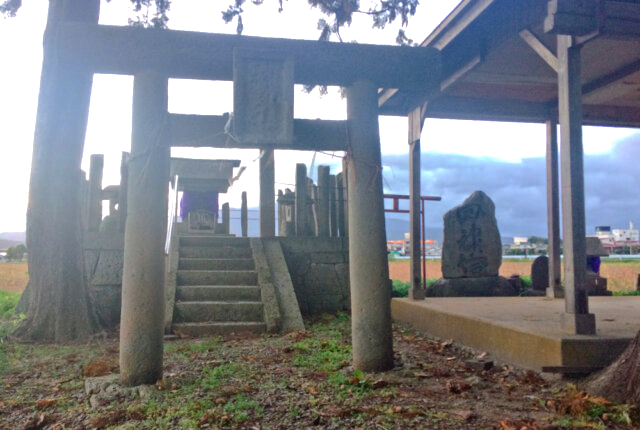

![[Yamagata, Shonai] Kumagaya Shrine, the birthplace of Kamenoo | Learn about the life of Kumagai Saburobei, the god アイキャッチ](https://bongheiberg.yamagata.jp/wp-content/uploads/2025/09/熊谷神社.jpg)
![[Yamagata, Tozawa] “Roadside Station Tozawa Kouraikan” Experience of traveling Korea | Korean gourmet food, and souvenirs アイキャッチ](https://bongheiberg.yamagata.jp/wp-content/uploads/2025/10/道の駅とざわ_高麗館9-1.png)
![[Yamagata, Murayama] Link MURAYAMA’s pizza shop “pizza nu-ma” | Delicious pizza tasting report アイキャッチ](https://bongheiberg.yamagata.jp/wp-content/uploads/2025/09/pizza-nu-ma7.png)